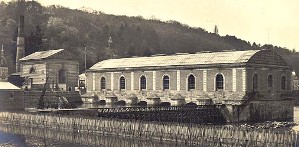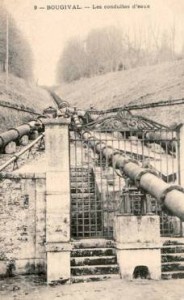The Marly Machine
The flow rate was 1800 to 1500 m3/day. Powered by the Seine’s current, 14 large cogwheels turned a number of force pumps.
This height difference was exceptional for the period. The leather used on the pistons would not have resisted a pressure of 15 bar, which led to the idea of having 3 levels of 50 m.
Of course, an icebreaker and a rake were needed upstream to prevent damage to the wheel blades.
This huge piece of machinery, designed by Rennequin Sualem from Liège, was composed of 14 hydraulic wheels of 12 m in diameter installed on the Seine. These wheels powered 221 suction and pressure pumps (64 at the bottom, + 30 and 49 at the first holding tank, + 78 at the second, all powered by a balance wheel using energy from the 14 wheels in the Seine). Building work, which began in
1681,was completed on 16 June 1684. The machine was inaugurated by King Louis XIV. Unfortunately, the machine was not only noisy and expensive but, being made of 90% wood, it deteriorated.
Today, only a few buildings remain including the Charles X block for pumping, a small edifice in the middle of the Seine and some housing for employees of the Versailles and Saint Cloud Water Company (SEVESC).
For groups, Bougival Tourist Information Office offers a thematic guided tour of the ruins of the Machine. See our guided tours



